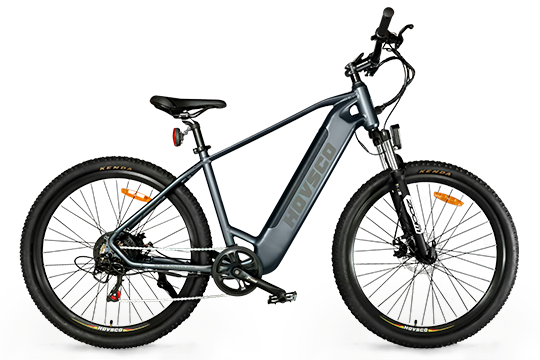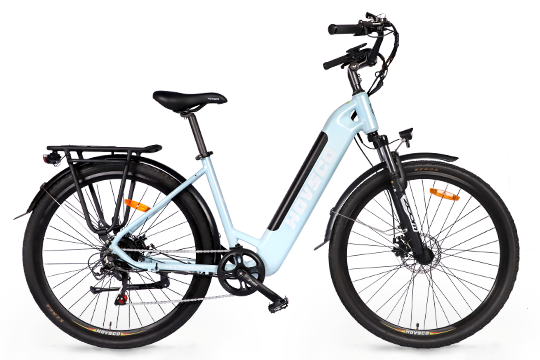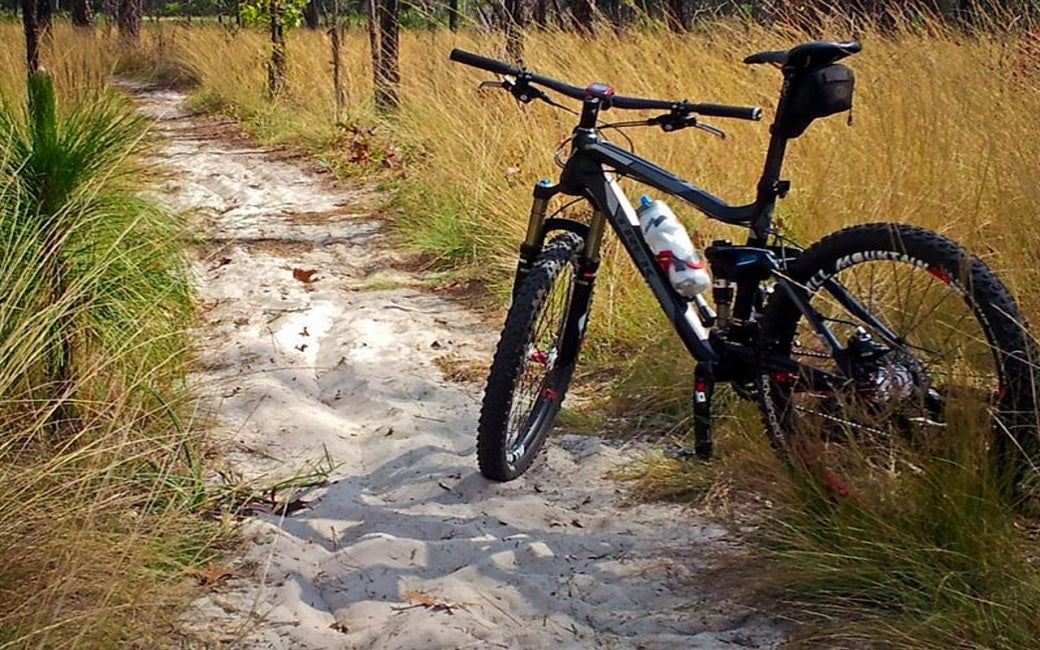How to Change Electric Bike Tires

Electric bikes come in a variety of motor types, shapes and sizes with knock-on effects on tire changing.
Tires on pedal-assist motorized bicycles are usually changed in the same way as those on non-electric bicycles.
Electric bikes that feature hub motors, however, are different. Here the drive sits in the center of the wheels and provides power independently of the cranks.
The vast majority of e-bikes feature hub motors on the rear wheel, though there are models that mount them on the front too. Non-hub motor wheels can be changed in the same manner as regular wheels. Those on hub wheels, however, will be slightly different.
Shift To The Highest Gear
If you’re replacing a tire on the rear wheel, shift to the highest gear so that the chain is farthest away from the hub.
Put Your Bike In The Correct Position
You can either secure your bike in a stand or turn it upside down to help it stay in the correct position by supporting its weight with the saddle and handlebars.
If you decide to turn the bike upside down, please ensure that you move any handlebar-mounted consoles out of the way first so that you don’t damage them.
Unplug The Motor Cable
If your bike has a hub motor, there will be a cable that runs from the battery to the hub. While the setup can vary between models, it is usually routed along the chainstays.
Look for a location to unplug this cable. Whenever possible, unplug the motor, battery, or halfway between them.
Remove The Wheel From The Frame
If your electric bike has a quick-release skewer, flip out the handle and then unscrew it as you would normally.
If your bike uses an axle bolt secured with nuts, then you will need to remove these. Peel back any rubber nut coverings or guards. Then, use an appropriately-sized spanner to remove the nut.
On some models, you will need to hold the other side with a spanner while you unscrew the axle.
In the case of electric bikes that have frame insets - an oblong cut-out where the wheel is positioned differently to the frame - make note of the axle's location before removing it. When you come to reinstall the wheel, you need to ensure that you fit it back in the same place.
If there are washers, then make a note of their orientation. On some bikes, the outward-facing side will be different from the inward-facing side. It is important to ensure that the wheels are installed correctly when you reinstall them.
Lift The Wheel Off The Bike
Once you’ve undone the axle nuts and remove the bolt, you should be able to remove the wheel from the frame. The chain will catch on the cassette as you try to lift it out, so push on the jockey wheels to slacken it and give you more wiggle room.
Use Tire Levers To Remove The Old Tire From The Wheel And Fit The New One
Once the wheel is off the bike, the process reverts to a regular tire change. Tire levers made of plastic or silicone can be used to pry the tire from the rim. You may need to put two or three next to each other and then use leverage to release the rubber from the rim if it's tight.
Once the tire is clear of the wheel, you can choose to replace the inner tube (unless you use a tubeless system).
To fit the new tire, reverse the process. Place the bead of the tire in the groove of the rim to make fitting easier. Pull it over the rim's side using your hands or tire levers until it fits snugly inside the rim.
Connect a pump to the inner tube value and inflate. The tire should pop to the edge of the rim during inflation.
Replace The Wheel
Now you’re ready to replace the wheel. In order to make installation easier, place the rear derailleur in the dropouts or frame inset. Then fit the quick release or tighten the bolts.
Once you’ve finished, you’re ready to set off and enjoy your ride!






Leave a comment